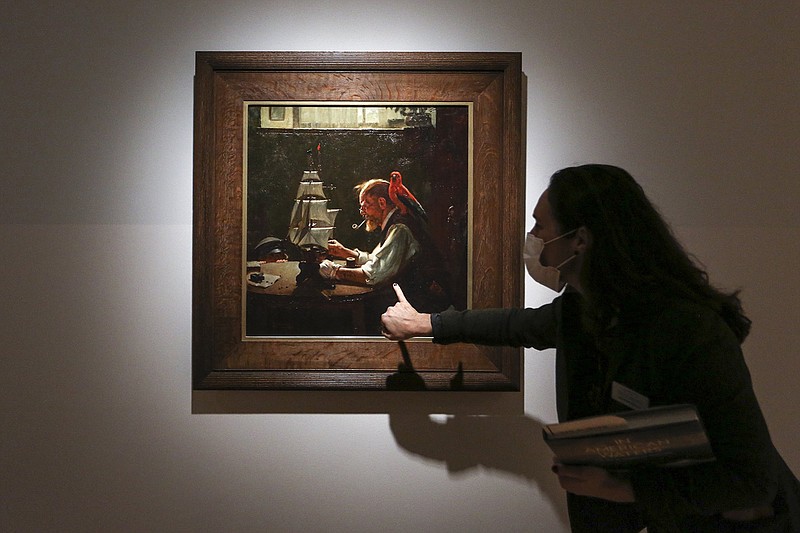BENTONVILLE -- While Crystal Bridges Museum of American Art may seem a long way from the ocean, it's more connected than is immediately apparent, said a co-curator of a new exhibition that opens Saturday.
"In American Waters: The Sea in American Painting" was co-curated by Austen Barron Bailly, chief curator at Crystal Bridges, and Daniel Finamore, the Russell W. Knight curator at the Maritime Art and History at the Peabody Essex Museum in Salem, Mass.
Though Bentonville seems landlocked, Crystal Springs, in which the museum is located, runs into the White River, which in turn empties into the Mississippi River and eventually into the Gulf of Mexico and then the Atlantic Ocean, Bailly said during a media preview Thursday.
Bailly said the exhibition's 70 works by a diverse range of artists explore how water plays a key role in American society, no matter where one lives.
"I hope that people will find time to pause throughout this exhibition and recognize their connectivity to something far away and vast," Bailly said. "Looking at the paintings is transporting and can inspire new ways of thinking about American art and history, as well as a sense that you might actually have a connection to a place like Salem through the art."
The artwork goes beyond paintings of seascapes and clipper ships. It also reflects the experiences of various groups arriving on American shores, from Pilgrims and European immigrants to enslaved Africans.
The trip through the exhibition is meant to evoke an ocean voyage from port to parts unknown. Before visitors enter, they may sign a "logbook" meant to evoke the passenger manifests that documented travelers aboard ships or arriving in U.S. ports.
Once inside the exhibition, visitors find themselves in "port," with paintings depicting early sailing vessels. This section is anchored by the 1797 portrait of George Washington that is part of the museum's permanent collection.
The viewer encounters other parts of the ocean journey throughout the exhibition, from ships heading out to sea to vessels arriving with immigrants from Europe seeking a better life in America.
In "Songs of the Sea," visitors are treated to recordings of sea shanties and cowboy songs, symbolizing the immigrant experience from the ocean voyage to the western expansion into the nation's prairies.
The transatlantic slave trade is represented by works such as "Sea Sick," a multimedia piece created in 2014 by Nick Cave. Vintage paintings of ships at sea surround a tobacco jar shaped as a racist stereotype flanked by cast raised hands and topped by a wall hanging of a ship rendered in gold-toned plastic.
"In American Waters: The Sea in American Painting" debuted at the Peabody Essex Museum earlier this year. It will remain on view at Crystal Bridges through Jan. 31.
Tickets to the exhibition cost $12. However, it is free for museum members, Supplemental Nutrition Assistance Program participants, veterans and visitors 18 and younger.
However, through Sunday, the museum will observe its 10th anniversary by waiving admission fees for all visitors.
A multi-author illustrated book published by Crystal Bridges and the University of Arkansas Press accompanies the exhibition.
Several events related to the exhibition are slated for tonight, including a teacher preview at 5:30 p.m. and an opening lecture at 7 p.m. A full calendar of programs is posted at www.crystalbridges.org.
As recommended by the Centers for Disease Control and Prevention, the museum requires all visitors ages 2 years and older, as well as staff, to wear a face covering indoors and during outdoor programs. Masks are available for visitors at the entrance.
